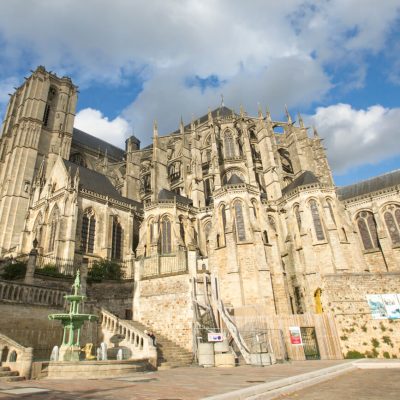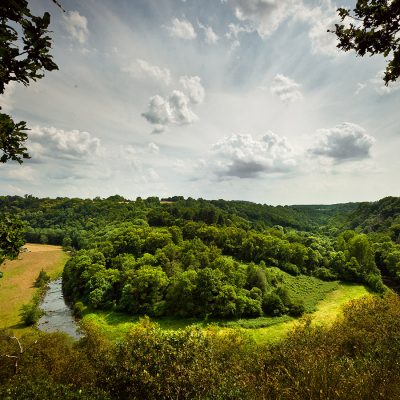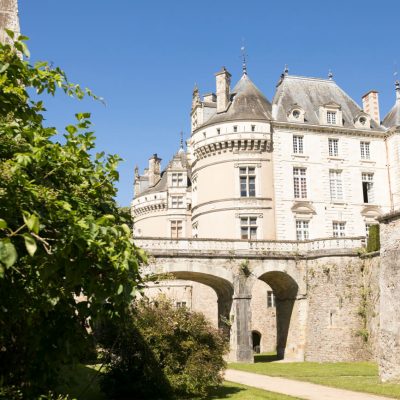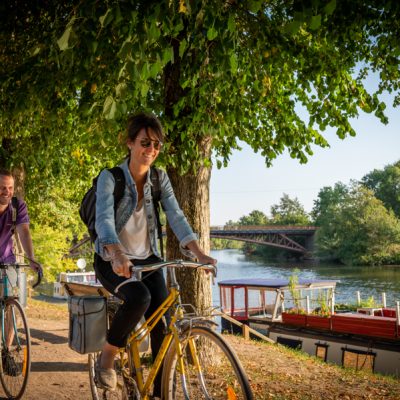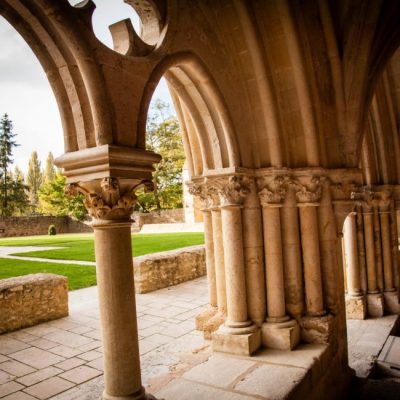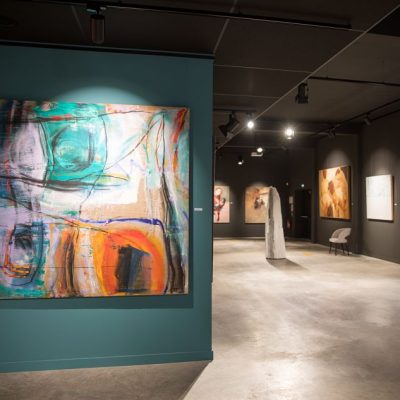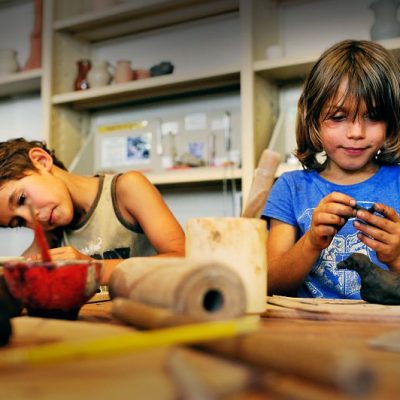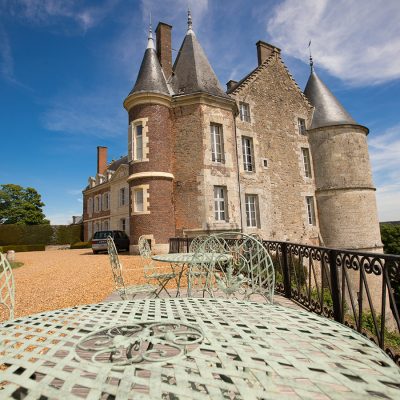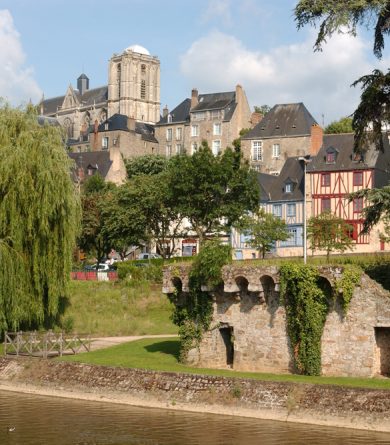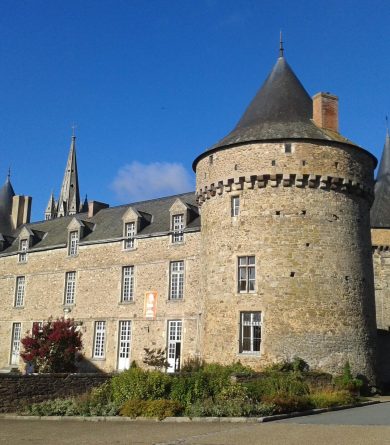The Royal Abbey of Épau remains one of the finest examples of Cistercian architecture in France. Around the abbey church, the cloister and the conventual buildings extend the park and the gardens. Many cultural events animate the abbey throughout the year.
Visit the interior of the Cistercian abbey
The building built in 1230 by Bérengère de Navarre, has preserved almost all of its buildings. Inserted in a 13-hectare park at the gates of the Arche de la Nature, the abbey is a major cultural center managed by the department of Sarthe.
The visit begins with the cloister which leads to the various buildings where the Cistercian monks lived for more than 500 years. We discover the boiler room and its fireplace of monumental proportions where the monks came to warm up, read and meditate. The scriptorium was used to copy and illuminate the manuscripts while the chapter house allowed the abbot to gather the monks there to distribute the daily tasks.
The sacristy houses the remains of 14th century wall paintings where you can still make out some religious scenes. The visit continues with the mainly Gothic style abbey church with its large openings and its rose window. The choir houses the recumbent statue of Queen Bérengère, founder of the abbey. By taking the staircase of Matins, one reaches the dormitory , a very vast room 43 meters long by 12 meters wide which extends above the conventual buildings.
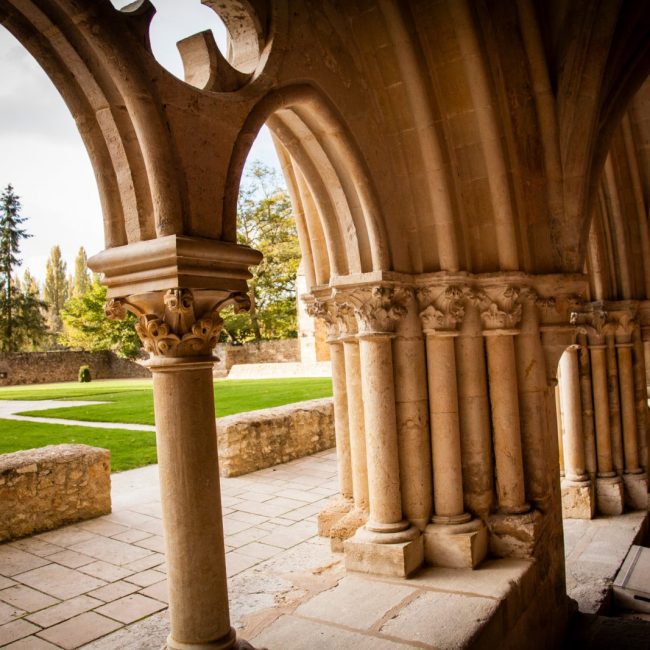
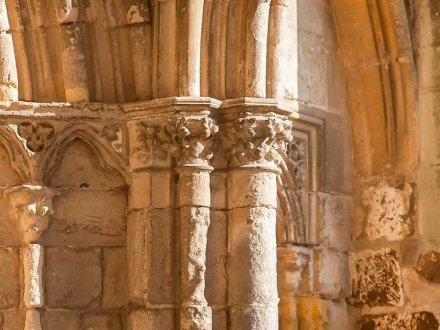
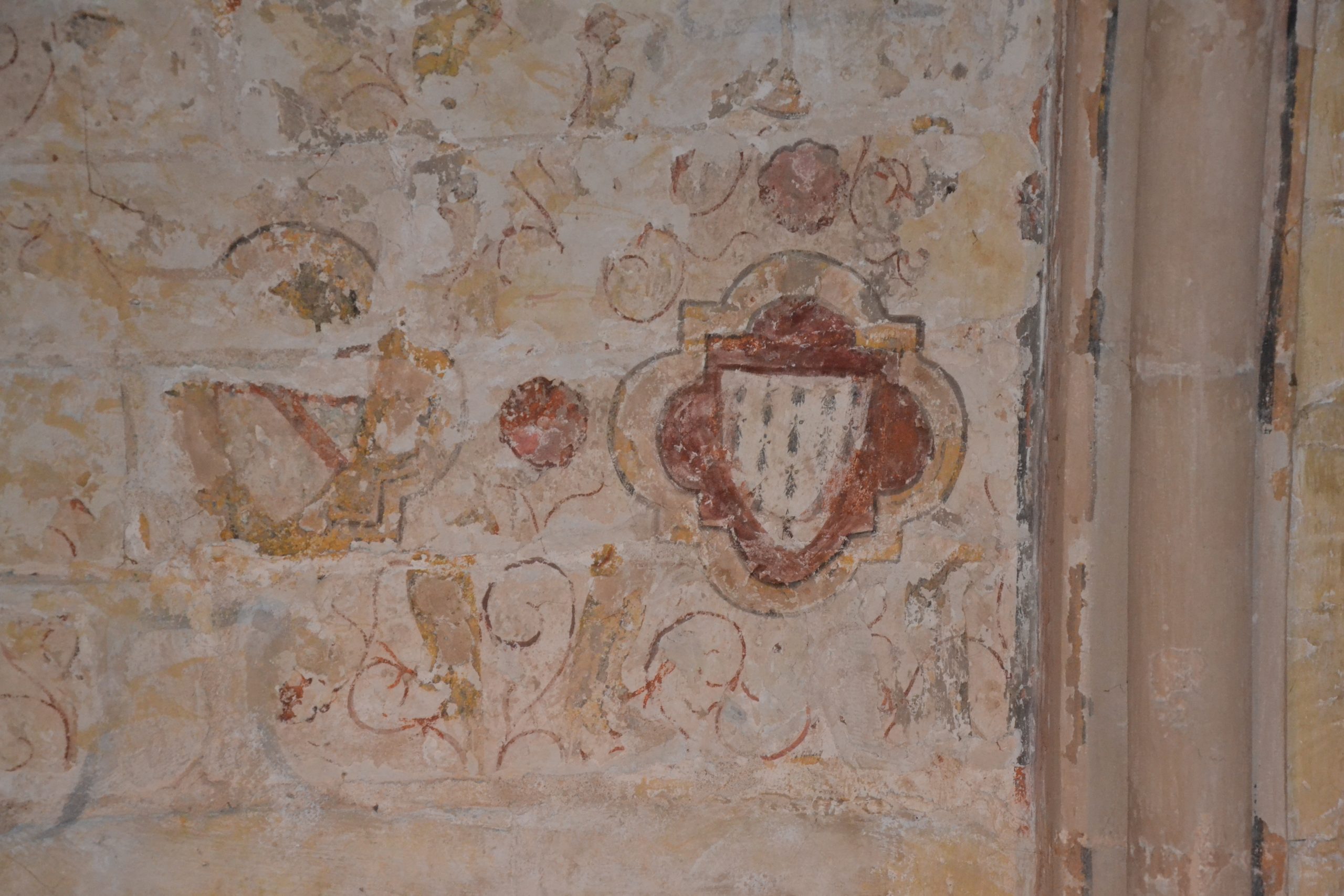
An abbey founded by Queen Bérengère
In the 1220s, Queen Berengaria of Navarre, widow of Richard the Lionheart, decided to build a large Cistercian abbey not far from the Cité Plantagenêt . Twelve monks from the Abbey of Cîteaux will join that of Épau. While the site is already well advanced, the queen dies in decembre 1230, around the age of 70. Her body is buried in the abbey she founded.
During the French Revolution, the last monks were driven out and the abbey was sold as national property. Transformed into a laundry and then into a farm, it passed through the hands of various owners before being bought by the Department of Sarthe in 1959.
Since its acquisition, a vast restoration program which is still ongoing has given the abbey a second lease of life. It now plays a democratic role by hosting meetings of departmental councilors and an important cultural role with a rich program of events, conferences and exhibitions.
On a free or guided tour, discover the architecture of the Royal Abbey of Épau before exploring the park and gardens or indulging in a gourmet break at the Café des Moines.
An adventurer’s notebook allows children from 6 years old to discover the history of the abbey while having fun!
Major events at the Royal Abbey of Épau
Every year in May, the abbey organizes the Festival de l’Épau programming about thirty classical music concerts with chamber music, vocal and sacred music but also alternative music. It also hosts the original event Les Siestes Teriaki, a two-day festival dedicated to staged music.
The abbey organizes various temporary exhibitions around themes related to nature, culture and heritage. Photography occupies a major place in the program with photographic tours in the park of the abbey.
For the end-of-year celebrations, the Abbaye de l’Épau puts on its clothes of light with magical light decorations, shows and sound wanderings in the gardens. The Christmas illuminations event attracts several thousand visitors every year.
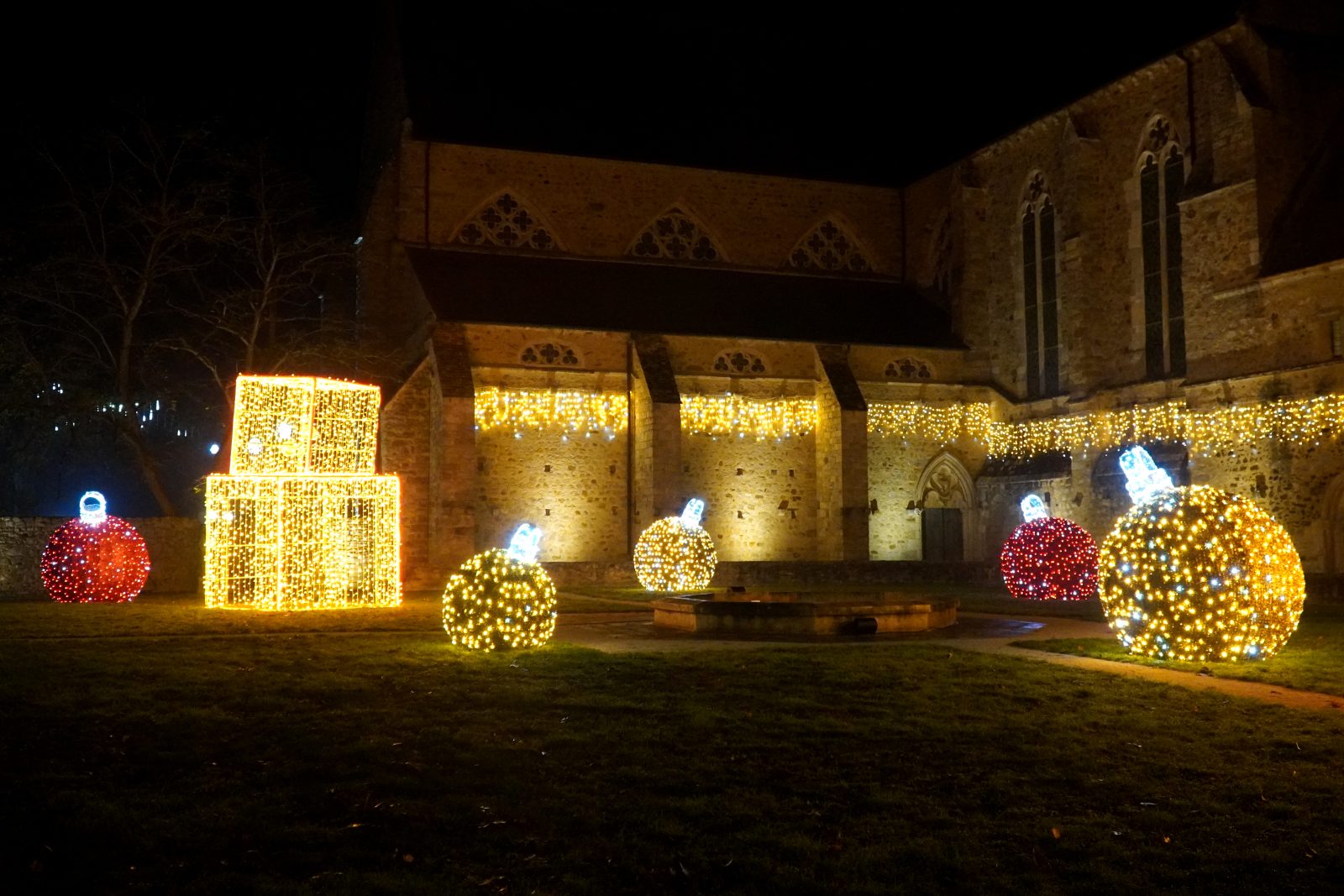
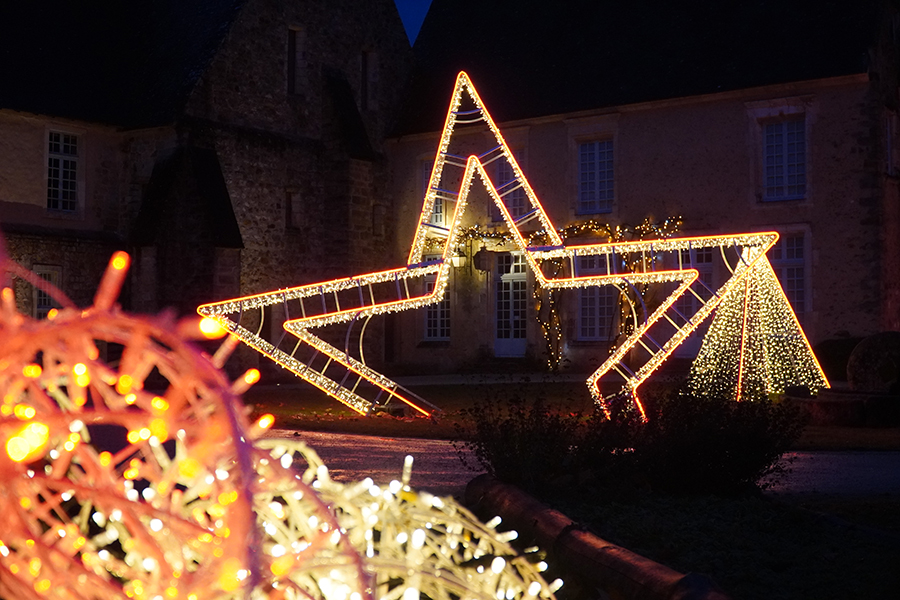
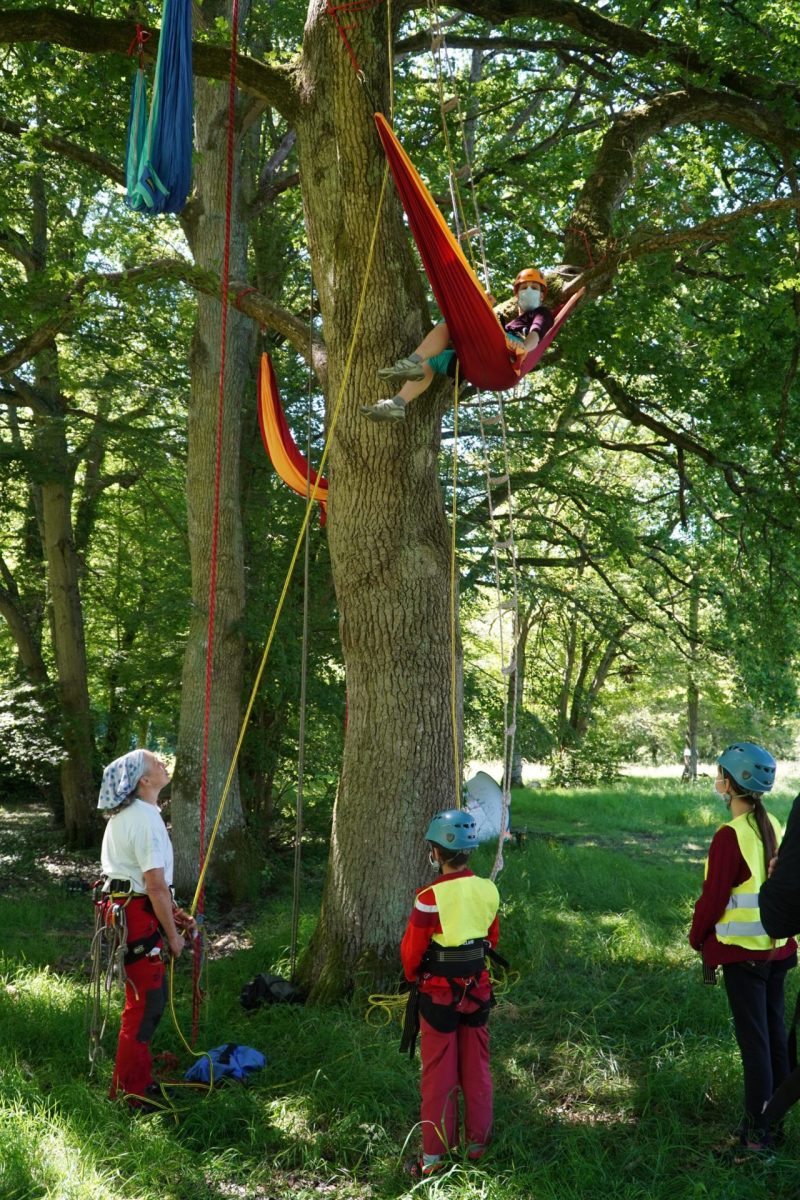
Discover the permaculture vegetable garden
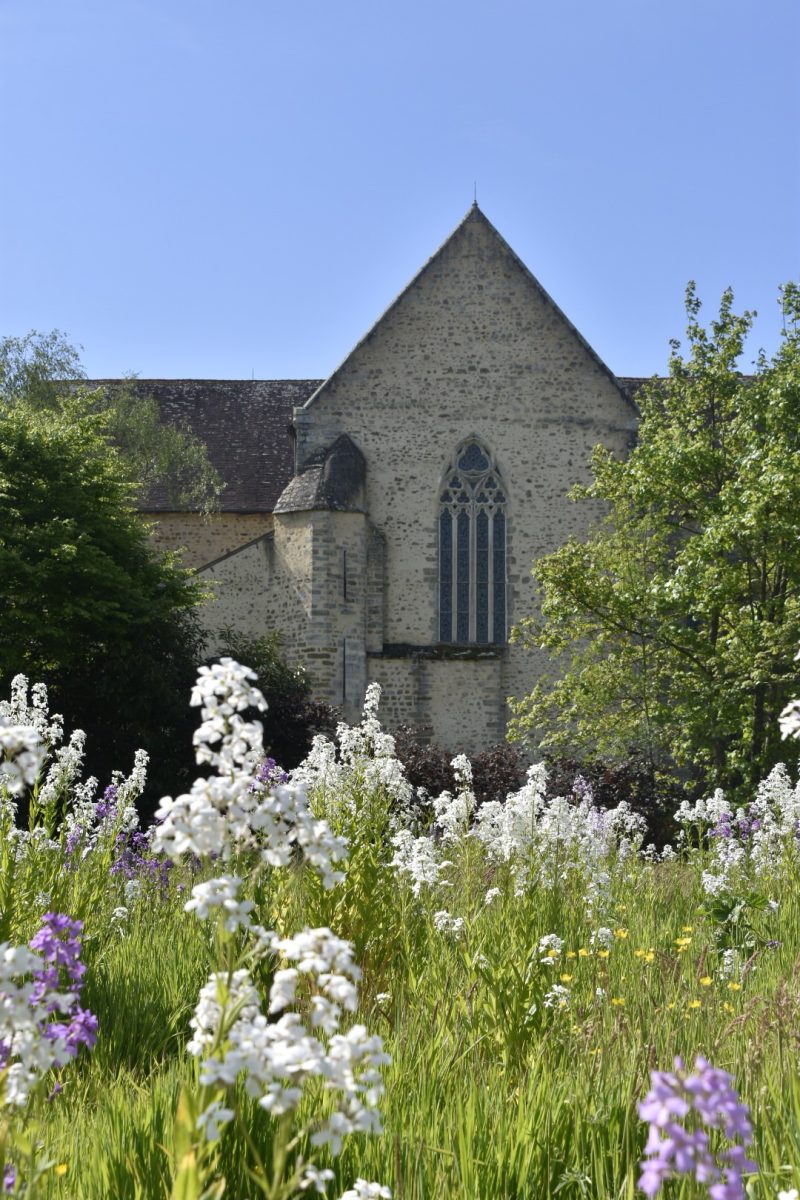
The Royal Abbey of L’Épau continues its Cistercian heritage with the creation of a permaculture vegetable garden. Like the monks living in autarky, the objective is to be able to supply 100% of the vegetables to the catering area of the estate: the Café des Moines.
The vegetable garden takes the form of the rose window and the lancets of the choir of the abbey. The choice of permaculture seemed obvious to anchor the site in the 21st century.
Various activities and workshops are offered to the public, such as tasting tours of the permaculture garden or conferences on biodiversity.
How to reach Épau Abbey by public transport?
• By tram: line 2 towards Espal-Arche de la Nature, stop: Gué Bernisson
• By bus: line 6 towards Saint-Martin stop: Gué Bernisson

